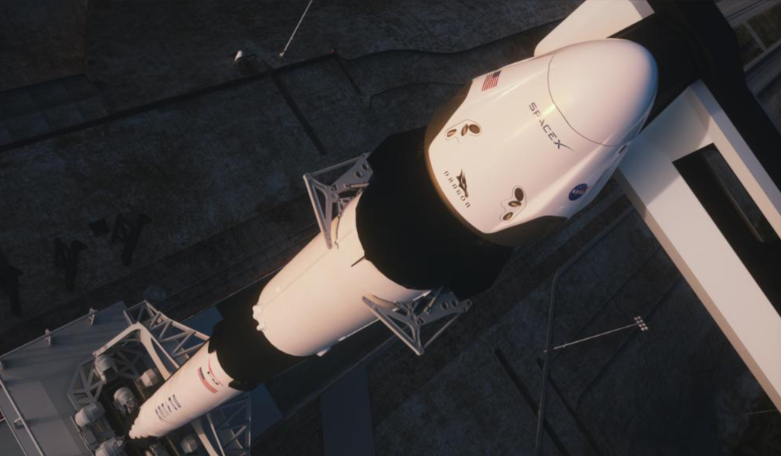If the critical in-flight test of the ship’s emergency escape system goes according to plan tomorrow, SpaceX will be on target to launch astronauts to the International Space Station later this year.
In preparation of this last major milestone, SpaceX has already raised up its Falcon 9 rocket and Crew Dragon capsule at launch pad 39A in Florida and the crew access arm has been extended ahead of Saturday’s in-flight demonstration.
Today a dress rehearsal with experienced NASA astronauts Bob Behnken and Doug Hurley — the duo tasked with flying to the station for a two-week stay – will take place starting at 1pm EST (18:00 GMT).
The two veteran astronauts will not actually go aboard the Crew Dragon, but will practice launch day end-to-end operations, including final spacecraft inspections and side hatch closeout.
NASA and SpaceX are targeting 8 am EST (13:00 GMT) Saturday, 18 January, for launch of the company’s In-Flight Abort Test. Backup test opportunities with the same four-hour launch window opening at 8:00 am EST, are available on Sunday, 19 January and Monday, 20 January.
The test, which has a four-hour launch window, will demonstrate Crew Dragon’s ability to safely escape the Falcon 9 rocket, therefore protecting the astronauts onboard in the unlikely event of an emergency during take off.
After liftoff, Falcon 9’s ascent will follow a trajectory that will mimic a Crew Dragon mission to the ISS matching the physical environments the rocket and spacecraft will encounter during a normal ascent.
SpaceX will then intentionally trigger Crew Dragon to perform the launch escape prior to 1 minute, 30 seconds into flight.
Once the launch escape sequence begins, Falcon 9’s first stage Merlin engines will shut down and Crew Dragon’s SuperDraco thrusters will begin their firing sequence. The launch vehicle and spacecraft will separate and the eight SuperDraco thrusters, which burn a high-pressure mix of hydrazine and nitrogen tetroxide propellants, will burn to completion.
The spacecraft is planned to splash down under its upgraded Mark 3 parachutes over the Atlantic Ocean around 10 minutes after liftoff. Breakup times of the Falcon 9 will vary though according to factors on the day such as winds, vehicle attitudes and positions.
A dedicated team of SpaceX Falcon 9 recovery personnel will be on hand to begin recovering debris immediately after breakup.
In total, SpaceX has completed over 80 tests of its parachute system, stated by the company to be one of the most advanced parachute systems in the world, including 10 multi-parachute tests of the upgraded Mark 3 system.
Air Force Detachment-3 personnel will also work with the SpaceX recovery team and mimic an actual rescue operation as part of the Dragon recovery operation.
The launch can be watched live on the SpaceX website here: https://www.spacex.com/webcast











